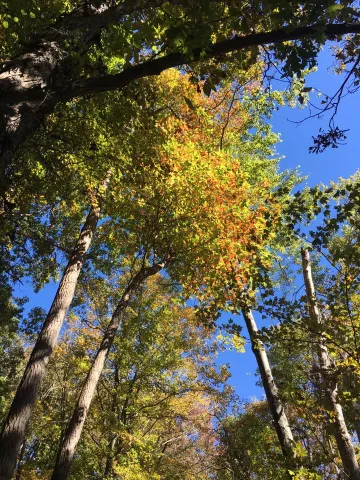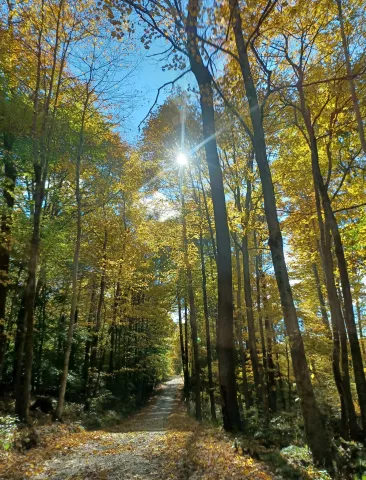The Hoosier Chapter works on a wide range of conservation and environmental protection issues, from protecting our state forests from logging to fighting a permit to burn hazardous wastes at a cement plant in Speedway, Indiana, close to homes, schools, and churches. Read on to learn more about some more of our efforts.
PROTECTING THE HOOSIER NATIONAL FOREST
The US Forest Service is planning to log and burn a section of the Hoosier National Forest. The plan includes logging over 5,000 acres and burning up to 15,000 acres of the Buffalo Springs Area. They are describing it as a restoration project but it will have many negative side effects. It would affect watersheds for public drinking (Patoka Lake), disturb a historic buffalo trace, disturb native animals, and turn horse trails into logging roads.
FAQs:
What are some of Sierra Club's concerns with the proposed Buffalo Springs Restoration Project?
- This project represents a radical departure from past practices in the Hoosier National Forest, as it is to our best understanding in fact dozens of separate and largely unrelated projects spread over more than 15,000 acres of the Hoosier National Forest and adjacent lands in the southern portions of Orange County Indiana (encompassing 5% of the HNF) with little attention given to cumulative impacts, site-specific impacts, or the impacts that would be felt by those who own adjacent private lands as well as the area communities.
Do you believe the project will have a negative impact on the Hoosier National Forest and surrounding areas? If so, what will those impacts be?
- This project would negatively impact a large area of our public lands. Moving forward with this project as it is currently written would affect a major public drinking water supply, Patoka Lake, by runoff from logging and burning, as well as turn 19 miles of forest and horse trails into logging roads, skid trails, and fire lanes. Additionally, this project would disturb a historic buffalo trace, kill historic trees and many native plants, and negatively impact many native animals.
- Additionally, we know that healthy, diverse, and old forest areas provide incomparable climate mitigation through carbon sequestration and many other factors. This plan would impact not only the local community but would have impacts far beyond Southern Indiana as we must work to preserve these increasingly rare forested areas for the health of our communities, our fellow species, and our planet.
- There are many other options the USFS could consider in place of this project. In fact, the Forest Service's website says that the 2006 Forest Plan on which the Buffalo Springs project is based "Needs revision," yet instead of revising the Plan, they are trying to push through this incredibly large project with very little current analysis.
- We ask that the project instead be based on current data and analysis and needs rather than on an outdated plan with little to no reference to current circumstances, climate, or communities.

Mid-States Corridor Statement
The Sierra Club Hoosier Chapter along with a coalition of other organizations released a statement on April 28, 2022 urging citizens to fight for Hoosier homes, farms, and habitats that will be destroyed by the Mid-States Corridor.
May 31st is the deadline to send in a public written comment about the Mid-States Corridor new terrain highway proposal. Please let the Governor, your state representative and state senator know that a new terrain highway is not necessary and that we should fix the roads we already have. See this tip sheet for making a public comment.
Comments on the Owen-Putnam RMGs
Sierra Club Hoosier Chapter Director, Amanda Shepherd, recently submitted comments to the Division of Forestry and Governor Holcomb regarding Resource Management Plans proposing burning and logging of portions of the Owen-Putnam State Forest (in particular Compartment 1 Tract 4, Compartment 4 Tracts 5 & 8, and Compartment 8 Tract 13). You can read her full comments here.

Other states are making utilities dig up toxic coal ash. Indiana is letting it sit there.
February 2021
Ash from Indiana's coal-burning power plants is contaminating groundwater across the state, rendering it unsafe to drink. But unlike some other states, Indiana is not requiring utility companies to remove the toxic ash from leaky pits. Read the full story on the Indy Star.